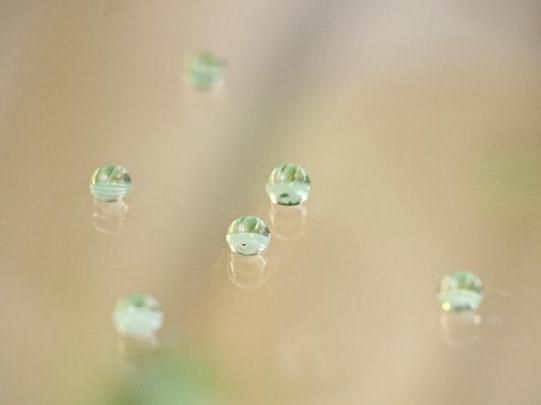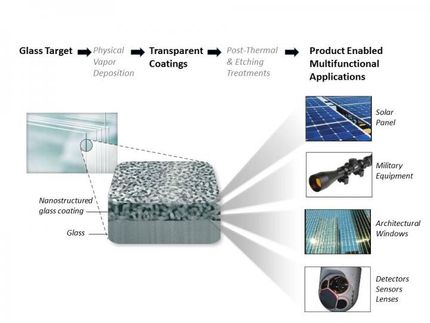Samsung licenses ORNL transparent superhydrophobic glass coatings for electronic devices
Advertisement
Samsung Electronics has exclusively licensed optically clear superhydrophobic film technology from the Department of Energy's Oak Ridge National Laboratory to improve the performance of glass displays on smartphones, tablets and other electronic devices.

An ORNL-developed thin glass film with superhydrophobic properties repels water that carries away dust and dirt, reduces light reflection and resists fingerprints and smudges.
Oak Ridge National Laboratory
ORNL's development of a transparent coating that repels water that carries away dust and dirt, reduces light reflection and resists fingerprints and smudges resulted from approximately three years of superhydrophobic research on glass-based coatings.
"The thin nanostructured layer of porous glass film enables these combined properties, making it suitable for commercial applications," said ORNL's Tolga Aytug, co-inventor of the technology.
To be superhydrophobic, a surface must achieve a water droplet contact angle exceeding 150 degrees. ORNL's coating has a contact angle of between 155 and 165 degrees, so water literally bounces off, taking away dust particles.
The ORNL research team developed the superhydrophobic technology by depositing a thin glass film on a glass surface and heating the coated glass to transform the surface into two material compositions. A selective etching process produces a porous three-dimensional network of high-silica content glass that resembles microscopic coral and enables water-repellent and antireflective properties.
Beyond electronics, the technology holds significant potential for applications in solar panels, lenses, detectors, windows and many other products. The fields of solar panels and architectural windows are still available for licensing.
Aytug led the technology's development in collaboration with ORNL co-inventors Parans Paranthaman, Daniela Bogorin, David Christen, Brian D'Urso and John Simpson and was recognized with an R&D 100 Award in 2015. The work was supported by ORNL's Laboratory Directed Research and Development Program and Technology Innovation Program.
Most read news
Other news from the department business & finance

Get the chemical industry in your inbox
By submitting this form you agree that LUMITOS AG will send you the newsletter(s) selected above by email. Your data will not be passed on to third parties. Your data will be stored and processed in accordance with our data protection regulations. LUMITOS may contact you by email for the purpose of advertising or market and opinion surveys. You can revoke your consent at any time without giving reasons to LUMITOS AG, Ernst-Augustin-Str. 2, 12489 Berlin, Germany or by e-mail at revoke@lumitos.com with effect for the future. In addition, each email contains a link to unsubscribe from the corresponding newsletter.































































